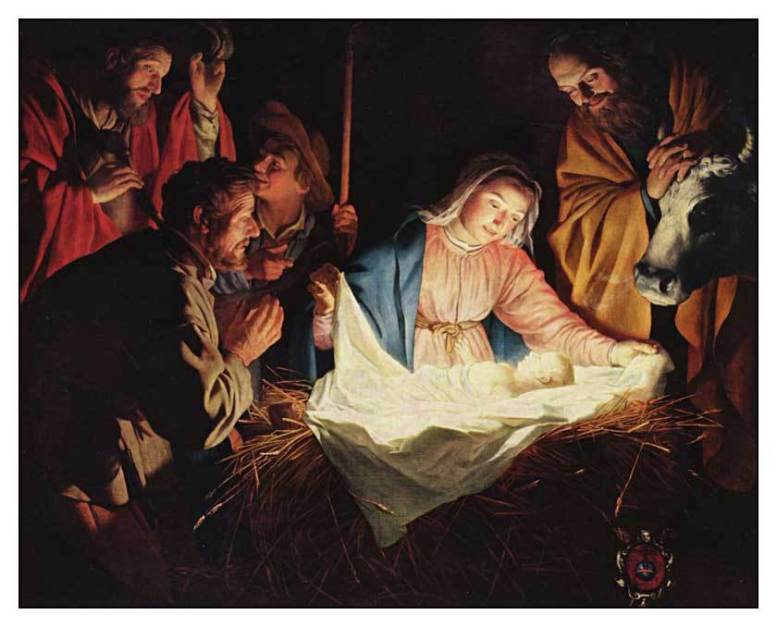The Real Secret to Weight Loss and Holiness
The Real Secret to Weight Loss and Holiness
 One of my older brothers, Mike, is a medical doctor who lives in California with his wife and family. I see Mike about once a year, usually at a family function. Mike was recently in Peoria with his wife and one of their children for a family wedding. Mike is 61 years old and he looks like a movie star. He’s tall, slim, and good-looking. If you asked me who he looks like, I would say that he looks like a cross between the modern-day actor George Clooney and the legendary actor Omar Sharif.
One of my older brothers, Mike, is a medical doctor who lives in California with his wife and family. I see Mike about once a year, usually at a family function. Mike was recently in Peoria with his wife and one of their children for a family wedding. Mike is 61 years old and he looks like a movie star. He’s tall, slim, and good-looking. If you asked me who he looks like, I would say that he looks like a cross between the modern-day actor George Clooney and the legendary actor Omar Sharif.
After the wedding, when I was talking to Mike, one of our uncles walked up to us and marveled at how great Mike looks. He then asked him the same question other people probably ask him: “How do you stay so thin?” Instead of answering the question, Mike said that when he was getting ready for the wedding, he realized that the sport coat he was wearing was the same one he wore when he was awarded his medical fellowship, more than 35 years ago.
At the wedding reception, the guests were given cards that indicated where they were assigned to sit. Georgette and I were assigned to the same table as Mike and his wife. When I sat down at the table, Georgette was sitting on my left side and Mike was on my right.
At the buffet table, while I piled food onto my plate, Mike took only a roll (no butter) and two small portions of food. I felt like a glutton when I saw what was on his plate and compared it to mine.
I need to clarify something for you. Mike is not one of those people who is genetically engineered to always stay thin. If he ate as much as most other men his age, he would have the same type of bloated belly that you see on a majority of men in their 60s. The question I would like to know the answer to is this: What is it that has motivated Mike to continuously limit what he puts in his mouth for more than 35 years?
I suppose you could say that as a medical doctor, Mike knows the dangers of eating the wrong kinds of foods. You could also say that because he’s a doctor, he takes more seriously our family’s medical history, which is heart disease on my mom’s side of the family and cancer on my dad’s.
I wish it were that simple. Most of us know what foods we should not be eating. We also know our family medical history and what we should be doing to minimize the risks associated with that history. Yet we do very little to modify our eating habits.
Do you know what my brother Mike has that most of us don’t have when it comes to managing our weight? He has a burning desire to keep his weight and his body at the exact same level that it was during the time that he was in medical school. The key word here is “burning.” Desire alone is not enough to motivate a person to make the sacrifices that are necessary to achieve a long-term goal.
The standard definition of the word “burning” is “marked by flames or intense heat.” My brother has been able to maintain his weight for more than 35 years because of an intense desire that he has to remain thin. That desire is so intense that he has continually — one meal at a time — monitored everything he puts into his mouth.
If I were to ask Mike how he was able to create and maintain the burning desire to stay thin, he probably would not be able to fully explain how he has been able to do it. I wish I could borrow for six months his burning desire to stay thin. During that time, I would be able to peel off the 30 pounds of extra weight that I lug around every day.
You may have heard of Lee Iacocca. He’s the hard-nosed businessman who brought Chrysler back from the brink of bankruptcy in the late 1970s and early 1980s. In his autobiography, he said that the one quality that he was unable to identify when he hired a new employee was whether the employee had “fire in his belly.” Iacocca said that there was only one way to find out if a man has fire in his belly: Hire him, and then watch to see if he has what it takes to be a champion. The fire in the belly that Iacocca talked about is what I’m referring to here as “burning desire.”
The great artist Michelangelo knew that in order for a person to achieve a worthy goal, the person has to have a strong desire to conquer the goal. One quote attributed to Michelangelo is “Lord, grant that I may always be able to create more than I desire.” Another of his well-known quotes is this one: “The greater danger for most us lies not in setting our aim too high and falling short, but in setting our aim too low and achieving our mark.”
Whenever you see a champion athlete, a person who enjoys superior health, or a person who has become extraordinary wealthy, you know that inside that person is a burning desire to achieve champion status, superior health, or extraordinary wealth. The one question that is not easily answered is: How does a person create a burning desire to achieve and maintain a goal — what does that person have to do?
Let’s go back 2,000 years. What was it that prompted Jesus Christ to allow the religious leaders, politicians, and soldiers to brutally torture and murder Him? The answer to that question is: He had a burning desire to open the gates of Heaven so that the sinful men and woman who he loved would have an opportunity to someday join Him in Heaven for all eternity.
I cannot tell you what you need to do to create a burning desire to become a champion, to be healthy, or to create wealth for yourself; however, I can tell you the most effective way to create within yourself a burning desire to be holy.
What I am about to reveal to you is what gave me the burning desire to begin the perpetual adoration program at St. Philomena Catholic Church in the early 1990s, and to begin writing my weekly Adoration Letter in the summer of 2006. If I tell you what you need to do to begin creating a burning desire to be holy, will you promise me that you will not ignore or disregard what I have to say? I fear that what I tell you will appear to be too straightforward and simple.
There are two things a person needs to do to create a burning desire to be holy: (1) Pray a rosary every day while doing your best to meditate on its mysteries; and (2) Consecrate yourself to the Blessed Virgin Mary using a consecration process such as the one provided by St. Louis De Montfort in his book, True Devotion to Mary, or the one provided by Michael Gaitley in his book, 33 Days to Morning Glory: A Do-It-Yourself Retreat In Preparation for Marian Consecration.
I made my consecration to the Blessed Virgin Mary on August 15, 1985, the feast of the Assumption, and have since then renewed it every year on that date. I had no idea at the time that I made the consecration that within my soul a flame would be lit that would later turn into a burning desire to bring people closer to God through a perpetual adoration program and a weekly publication. The flame that the mother of God lit within me eventually turned into a torch that gets stronger with each passing day. She can do the same for you.
And now, I have to go. I need to call my brother Mike and ask him what I need to do to create the burning desire to shed the 30 pounds of extra weight that my old, tired, 56-year-old body is being forced to haul around each day.
Peace.




4 Comments
Harry, You’re right It takes a burning desire to lose weight. One also has to be alert and be active in there daily lives. It’s one step at a time. There are plenty of foods out there that we can all still enjoy with moderation. We Americans seem to worry so much about being full all the time. In the past I’ve lost a lot of weight and gained some of it back. I’ve been able to keep at least 60lbs. off from my highest measured weight for the last 19 years. I too want to stay full. I read something from Pope Francis this week I’m try to remember everyday. He says.”The last little bit of food on your plate, the bite you just can’t finish, is for the poor”. Kinda sobering, isn’t it?
Take care and Good luck with the extra 30lbs.
Dear Harry and Georgette –
Your desire has been my desire for many years! [Not to lose weight! I do try not to GAIN, but don’t really need to lose any.]
The desire for Holiness! I do go through Jesus’ Mother – Consecration many years ago – but she must have led me to her Eucharistic Son, and He encircled me in the Trinity! Some day, in a personal letter [not email] I could explain that statement to you, if you’d like. !
Love and blessings for Holy Week! and a Glorious Easter.
Sister Roberta
Harry, just came across this post of yours while reading up on your 59 posts mentioning the rosary. I can’t say I have near the determination of Mike, and perhaps with a lean frame, not the difficulty others may have, but I have found from a book, The Alternative Day Diet, that the good Catholic practice of fasting regularly, 3 days a week such as Monday, Wednesday, Friday, or perhaps Tuesday, Thursday, Saturday or Monday, Thursday, Saturday, always reserving Sunday as a feast day, is great, I think, because it doesn’t drive down the metabolism and lets me eat normally on the other days. Basically, by eating two small meals on fast days (which together do not add up to more than a full meal) and then one normal meal, like we do on Ash Wednesday and Good Friday, except not worrying about the meat, means I skip 3 meals a week which I otherwise would have consumed. I reflect that I didn’t put on those pounds instantly, so I am content that I didn’t have to take them off very quickly. Still, they fell off pretty fast and even when I reduced to two fast days a week, they stayed off. It may also help that those fast days almost always start off with just fruit for breakfast which was the main principle of the Fit for Life Diet my folks adopted in the 1980s. Also, I do permit myself one cheat: wintergreen Life Savers. Each has only 15 calories and there is no way to take more than a couple. Finally, starting the day with about two cups of water may be helpful to get hydrated, which might prevent a common cause of craving food.
Oops, the book is the Alternate Day Diet,, not the Alternative Day Diet.